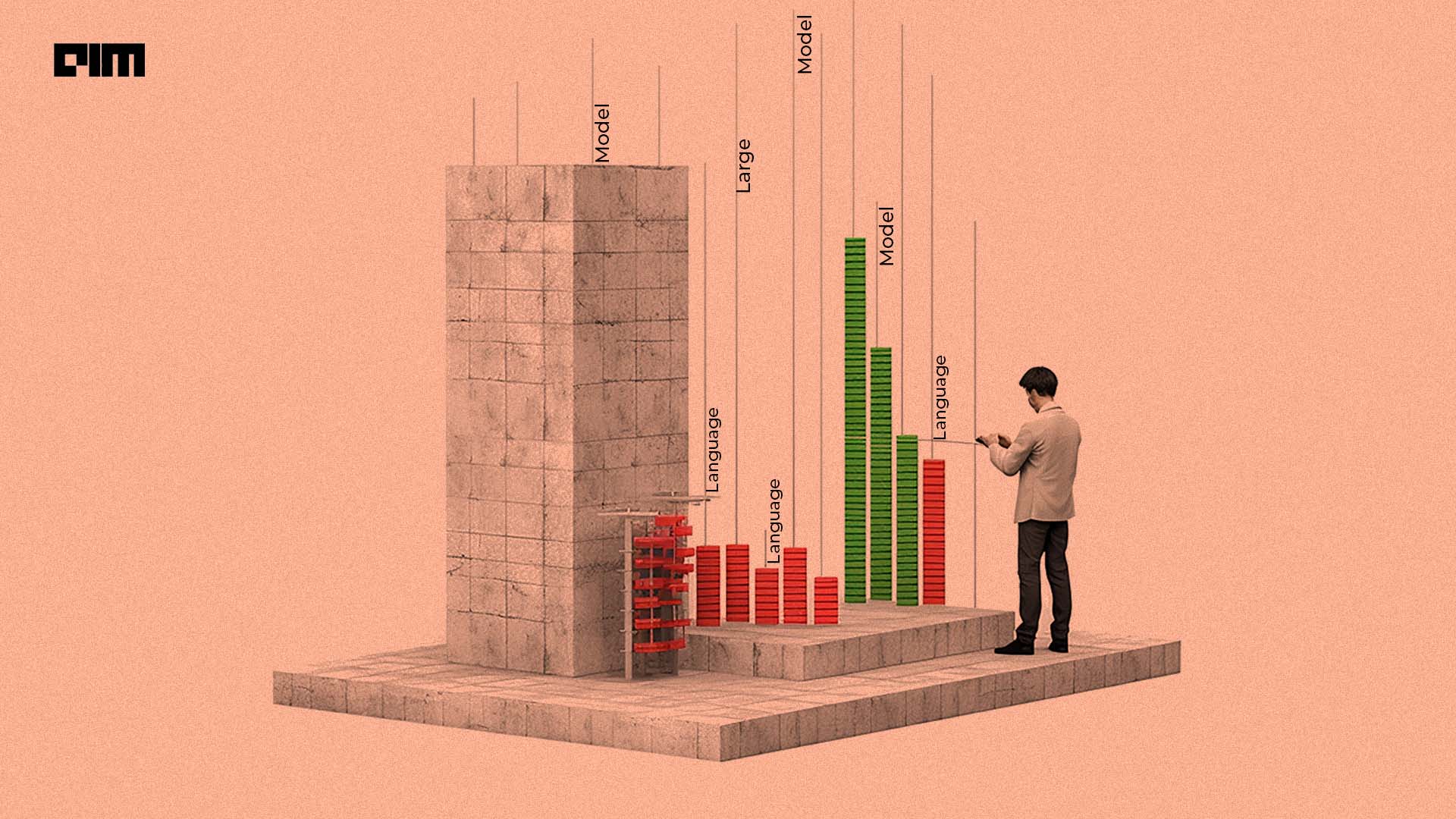What is Humanity’s Last Exam
- By AIM Research
- Published on
Rapid AI benchmark breakthroughs reveal dazzling progress—but are they masking critical limits in real-world intelligence?


The pace of AI progress is nothing short of staggering. Benchmarks once considered unassailable—like ARC-AGI and FrontierMath—are now falling. ARC-AGI has been beaten, and FrontierMath has reached a modest 32% accuracy, signaling that AI models are finally starting to tackle research-level math problems. Yet, while these improvements are impressive on paper, they spark a heated debate: Do these metrics truly reflect the advancement of artificial intelligence, or are we witnessing a dangerous oversimplification of what it means to be “intelligent”?
For years, benchmarks have served as the yardsticks by which we measure AI progress. ARC-AGI, once a seemingly insurmountable benchmark, has now been overcome, and FrontierMath is showing modest improvement with its current 32% accuracy. These numbers indicate that modern AI models are beginning to handle tasks that were once the sole province of human experts in mathematics and other research disciplines.
But the story does not end there. Last week, a new benchmark called “Humanity’s Last Exam” was introduced. Designed as the final closed-ended academic test of human knowledge, it spans a wide range of subjects—from classics to ecology—and involves questions that even seasoned experts would find challenging. Early indications suggest that this benchmark is saturating at a rapid pace. In simple terms, AI models are starting to answer these tough questions more frequently than expected, a fact that both excites and alarms the community.
Proponents argue that as AI models achieve higher scores on these rigorous tests, we are witnessing a leap toward expert-level understanding and reasoning. For instance, one enthusiastic contributor noted,
“Saturating this benchmark would be something absolutely inhuman and couldn’t be anything less than AGI.”
This sentiment reflects the high stakes of the race: if AI can master Humanity’s Last Exam, it might be nearing a level of performance that challenges our very definition of human intelligence.
However, not everyone is convinced that these closed-ended benchmarks are the be-all and end-all of AI progress. Patrick Schwab, Senior Director of Artificial Intelligence and Machine Learning, warned,
“I’d be careful with estimating progress from static benchmarks. Once published, such benchmarks become a target for optimization, and it’s not clear that improvements are due to generally useful capability improvements or simply overfitting to the benchmark.”
Schwab’s caution highlights a critical issue: benchmarks, by their very nature, are static targets. Once an AI model is tuned to perform well on a specific set of questions, the improvement might not generalize to the open-ended tasks that define real-world intelligence.
It is true that achieving high accuracy on a benchmark like Humanity’s Last Exam is an impressive feat. However, critics argue that these tests only scratch the surface. While AI models are now capable of answering hard, well-defined questions, they still struggle with open-ended tasks that require integrating information from multiple sources and filtering out distractions. This shortfall is significant because true intelligence is not merely about retrieving facts or following formulas; it is about synthesizing disparate pieces of information and making nuanced decisions.
Lee Geyer, a noted health care analytics advisory expert, offered a different perspective. He stated,
“The fact that the exponential rise follows the benchmark release suggests that the models are being updated to include those problems. Yes, they are getting better, but this is not a coincidence.”
Geyer’s observation implies that the rapid improvements might be less about a breakthrough in understanding and more about models being fed data from the benchmarks themselves. This raises a worrying possibility: if AI is simply memorizing or overfitting to these tests, then high benchmark scores may not translate into genuine, adaptable intelligence.
The introduction of Humanity’s Last Exam has ignited a firestorm of controversy. Designed as a comprehensive test of academic knowledge across multiple disciplines, the exam is meant to represent the final frontier of human expert capability. It has been developed with contributions from nearly 1,000 subject experts from over 500 institutions worldwide. Yet, the rapid saturation of this benchmark raises unsettling questions about the true progress of AI.
Dr. Raj Bhakta, Founder and CEO of ChemAI, expressed optimism about the potential of reinforcement learning (RL) applied to large language models (LLMs), saying,
“The emergent properties of RL applied to these LLMs is a step change and could see us get to world class expert level intelligence and agentic capabilities.”
While such bold predictions are exciting, they are tempered by the harsh realities observed by many experts. The accelerated pace of benchmark saturation might lead some to prematurely declare the advent of artificial general intelligence (AGI), when in fact, these models still lack the robustness required for open-ended reasoning and creative problem-solving.
Critics argue that focusing solely on closed-ended benchmarks like Humanity’s Last Exam provides a skewed view of AI capabilities. While these benchmarks are useful for measuring progress in structured tasks, they do not capture the complexity of real-world challenges. As one commentator put it,
“These tasks, answering hard questions, is not the whole story. The models still struggle with open-ended tasks that require integrating information from multiple sources and avoiding distracting information.”
This sentiment underscores a key limitation: the ability to excel in an exam setting does not necessarily equate to true understanding or the capacity to innovate in unpredictable scenarios.
One of the most controversial points in this debate is whether the rapid saturation of benchmarks like Humanity’s Last Exam truly signifies progress toward AGI, or if it merely represents a narrow optimization. Some experts believe that once models achieve high accuracy on such benchmarks, we will have a reliable measure of their academic capability. Others, however, caution that this might lead to a false sense of accomplishment.
For example, one contributor predicted that reaching 90% accuracy on Humanity’s Last Exam would not be enough to declare AGI, arguing instead that achieving such a milestone would be “nothing short of ASI++.” Meanwhile, others, like a commenter from the community, maintain that even a 50% or 75% score might indicate a significant breakthrough. This divergence of opinion illustrates the contentious nature of benchmark-based evaluation.
Moreover, the discussion extends beyond mere numbers. The process by which these benchmarks are constructed and updated plays a critical role. With contributions from a vast and diverse pool of experts, Humanity’s Last Exam is designed to be as challenging as possible. Yet, if AI models continue to improve rapidly on this benchmark, it raises concerns about the possibility of overfitting or the models learning to exploit the structure of the test rather than developing genuinely versatile intelligence.
Despite these controversies, there is no denying that the pace of AI progress is accelerating. Benchmarks that once seemed insurmountable are now being conquered, and new challenges are being introduced at a breakneck speed. The evolution of these tests provides both a measure of progress and a cautionary tale. It reminds us that while AI models are making impressive strides in specific, well-defined tasks, the journey toward truly autonomous, adaptable intelligence remains fraught with difficulties.
The debate over Humanity’s Last Exam is emblematic of the broader challenges facing the AI community. As researchers and developers push the boundaries of what is possible, they must grapple with questions about the nature of intelligence, the limitations of current evaluation methods, and the risks of overselling incremental improvements. The controversy surrounding these benchmarks is not merely academic; it has profound implications for how AI is deployed in the real world, influencing everything from academic research to commercial applications.
In conclusion, the rapid saturation of benchmarks like ARC-AGI, FrontierMath, and now Humanity’s Last Exam marks a significant milestone in the development of AI. Yet, this progress is double-edged. On one hand, it demonstrates that AI models are beginning to solve complex, research-level problems with unprecedented speed. On the other hand, it exposes the limitations of current evaluation methods and raises critical questions about the true nature of machine intelligence.
As AI continues to advance, it is imperative that we maintain a critical perspective. We must ask whether high benchmark scores genuinely reflect a model’s ability to reason, innovate, and solve open-ended problems, or if they merely represent an overfitting to a set of predetermined questions. The controversy is far from settled, and as the debate intensifies, one thing is clear: the race to achieve AGI is as much about managing expectations as it is about breaking new technical ground.
The future of AI is being written today, and while the rapid pace of progress is undeniably exciting, it also demands a cautious, nuanced approach. Only time will tell whether these breakthroughs will translate into truly intelligent systems capable of navigating the complexities of the real world, or whether they will remain confined to the realm of static benchmarks and controlled environments. In these turbulent times, it is the blend of ambition and skepticism that will guide us toward a more balanced and realistic understanding of AI’s potential.
